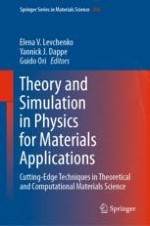2020 | OriginalPaper | Buchkapitel
11. Prediction of Energy Gaps in Graphene—Hexagonal Boron Nitride Nanoflakes Using Artificial Neural Networks
verfasst von : Tudor Luca Mitran, George Alexandru Nemnes
Erschienen in: Theory and Simulation in Physics for Materials Applications
Aktivieren Sie unsere intelligente Suche, um passende Fachinhalte oder Patente zu finden.
Wählen Sie Textabschnitte aus um mit Künstlicher Intelligenz passenden Patente zu finden. powered by
Markieren Sie Textabschnitte, um KI-gestützt weitere passende Inhalte zu finden. powered by
